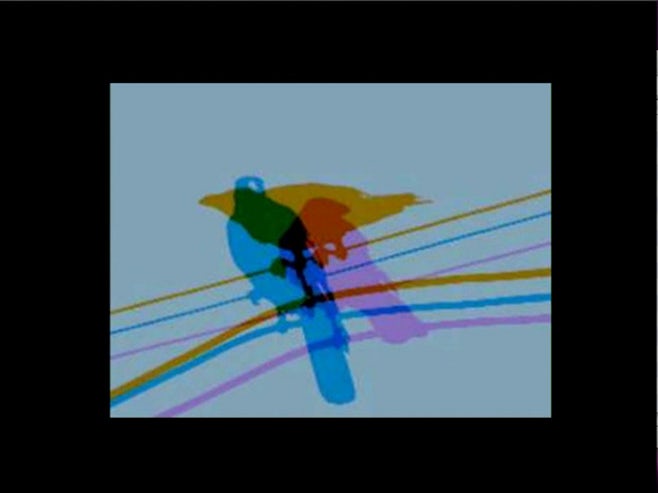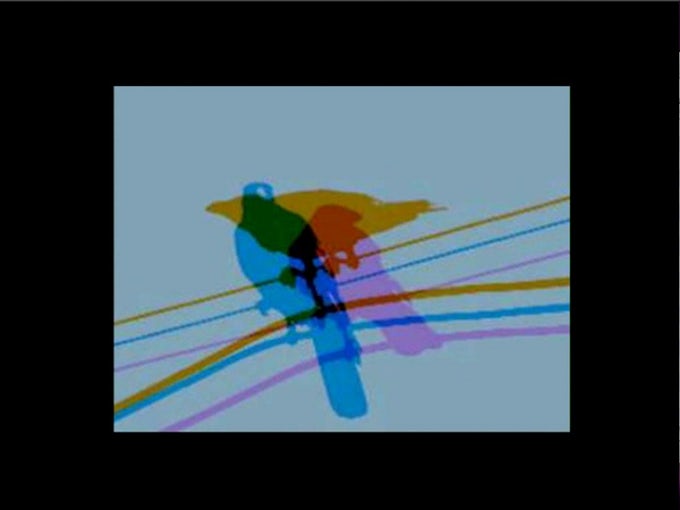
Experimenta, the first and only festival of experimental cinema in India, came back after a one year break with a programme focused on the historical and contemporary relations between visual arts and film practices. After being initially based in Mumbai and appearing in Delhi in 2004, the festival now forms part of the vibrant cultural scene in Bangalore. Experimenta 2009 stressed and embedded itself within the upcoming experimental film and video scene in Asia with curated programs from South Korea and Thailand. It further showcased films from North America and Europe, though included only two selections from India itself. Rather then this representing a lack of interest or practice of experimental moving image work in India, this looking beyond India can be linked to the curatorial choices of Shai Heredia, curator and founder of Experimenta and Filter India (an independent platform for film art), who through the festival programming, as well as through her research project Excavating Indian Experimental Film, has gradually created a platform for examining the many different traces of experimental film and video within the history and present of Indian cinema. Heredia has also brought a series of international trajectories to an Indian audience in order to foster a dialogue between diverse histories of experimental moving image work. Earlier editions of Experimenta thus revisited Dhundiraj Govind Phalke’s early cinema works taking up mythological contents; experimental documentary short films about family-planning, made within the government’s Films Division in the 1960s and 70s that fall outside Film Division’s more formulaic educational and propagandist style; or Indian New Wave cinema’s play with fictional narratives. The festival has set those partly forgotten works next to contemporary practices in India that challenge documentary realism through the use of fiction, abstraction or found footage. One also saw programmes representing Structuralist film-making and Expanded Cinema in Britain and Germany, and contemporary video art works from different international contexts.
This long-term commitment to creating a space for individual moving-image practices that fall in between the categories educational institutions and cinemas operate under – as well as the condition of a lack of state and sustained private funding, which has forced the festival to rely on institutional support and the volunteer efforts of film enthusiasts – is a crucial aspect of Experimenta, and created a very energetic atmosphere during the festival.

A majority of the work shown in film and video formats was Structuralist in terms of its emphasis on the conceptual and material basics of film-making. Pablo De Ocampo and Jacob Korczynski, invited guest curators from The Images Festival in Toronto, presented seven short films under the title ‘Siting Cinema’: including, for example, Oliver Husain’s Mount Shasta (2008, 16mm) and Isabell Spengler’s The Pitch (2007, video). Both utilised the space before the actual film, making that into the main site of activity by enclosing it within a miniature film set – thereby evoking and commenting on the larger apparatus of cinema, its industry and the fantasies attached to it. Other guest curators Peter Zorn (media artist and co-founder of Werkleitz Media Art Center in Halle) and Sandra B. Naumann (a researcher on the history and present of correlations between media, sound, light and performance work, based in Linz and Berlin) presented lectures at the Gallery SKE. Tracing the multiple relations between politics and perception in multimedia art, Zorn pointed towards historical models from the 1920s avant-garde, 1960s underground film and the Fluxus movement to examples such as Karpo Godina’s experimental work critical of former Yugoslavia’s politics (made from 1966 to 1973) or Denis Beaubois’s film performances with surveillance cameras (In the Event of Amnesia the City Will Recall, 1997). This lecture was complemented by Zorn’s showcasing of work developed out of the Werkleitz Media Art Center residencies during the last ten years. Naumann’s lecture ‘Colour, Light, Art, to Live Cinema’ provided an illustrated historical background to contemporary VJing and Live Cinema projects, and thus expanded the audience’s understandings of how music is visualised, by means of both technological possibilities and their artistic creative employment. Naumann also made the last evening of the festival a particularly special experience by presenting a programme of rarely seen works by film pioneer Mary Ellen Bute, who very early on (her first film made in 1934) explored the possibilities of creating visuals in direct connection to acoustic sounds or music.
Jaaga: The Creative Common Ground, Experimenta’s main screening venue, exemplified the experimental and collaborative character of the festival overall. The building’s capacity to be transformed according to the artistic media utilised, and to the need for audiences to sit in front of a screen or freely move around, was demonstrated during Hangjun Lee’s Nebula Rising (2009), a film and sound performance using five 16mm projectors (borrowed from institutions and individuals in the city) placed on two of the three levels of the metal Jaaga structure. Likewise, its flexibility was apparent during the closing VJ and music performance City Signals (2009) – as well as in the concentrated atmosphere evoked by the temporariness of the cinema space that had been created within the structure for the time of the festival. In such a matter of fact and light manner Experimenta embodied the fluctuation of moving images between spaces and the overruling of obsessive demarcations of film and art spaces.
Part of the focus on Asian experimental film scenes was a package from the Bangkok Experimental Film Festival, which showcased short films addressing, in diverse and personal ways, the current political climate in Thailand. Lee from EXIS in South Korea brought, in addition to his own work, two programmes of contemporary South Korean video and film works. The fourteen-minute observation of a power station in Danginlee (Danginlee Power Station, 2004, MiniDV) by South Korean film-maker Seo Won-Tae showed a cinematic crafting of new shapes and geometric forms through a camera-based interrogation of the urban landscape and factory architecture. Danginlee Power Station was shown alongside other explorations of rural landscapes such as a study of the Pacific Ocean by Minyong Yang (The Dark Room, 2001, 16mm), and also seemed set in conversation with Mike Stubbs’s Gift (1995/6, miniDV), part of Zorn’s Werkleitz programme, which depicted parts of the East German landscape that had been affected by mining and chemical production.
In addition to such formal conversations between film and art works, the fact that there were no parallel screenings or events paved the way for engaged discussions in between screenings. A dialogical and self-reflexive mode was apparent in the collaborative project Vivaadada Bagge Samvaada (2009), shown at Samuha, a space used collaboratively by 17 artists. The video installation was conceptualised and conducted by Ulrike Mothes and Arun Kumar in collaboration with eight students from Shrishti School of Art, Design and Technology in Bangalore, and investigated personal relations and individual responses to the violence that erupted in Mangalore in early 2009 against Indian women – young women in the city’s public space, who were perhaps returning from work or from meeting friends in a pub, and who were consequently considered a threat to Hindu nationalist ideologue’s ideas of morality. Various video clips addressing relations between gender and public space played on a TV monitor in two small booths. The students’ short films were arranged by a software program which reacted to choices made by the viewer, such that different narratives unfolded with each user.
‘Dream on’, the title of the programme Heredia curated from the hundred international films that had been sent to her this year, offered varied understandings of dream spaces. From the translation of the ritual called Gadde Utsav performed in a village in North Goa into a personal dreamlike story in Flights of Sleeping Birds by Gayatri Kodikal (2009, miniDV); or Kempinski by Neil Beloufa (2007, miniDV), a sci-fi documentary set in Mali; to Chaoba Thiyam’s short film The Eye of an ‘I’ (2008, miniDV), which hinted at the fragile structures for independent film-making in Manipur, one of the most violent states in India. Thiyam’s film was made over the period of one year and moves between an evocation of a nightmare composed out of accumulated images of violence (here related specifically to the permanent threat caused by Manipur’s Armed Forces Special Power Act (AFSPA), giving legal immunity to Army officers since 1958) and images of numerous civil protests responding to killings that went without trial. These are juxtaposed with oneiric sequences in which the film-maker imagines a hero riding along city roads on his motorbike – a hero seemingly calm and confident enough to rescue the dreamer from his claustrophobic experiences. While the film uses TV news footage that graphically displays the violence and anguished protests provoked by AFSPA, its overall pace and its alternation between condensed and rapid montage of images and sounds, which then release into Easy Rider-like sequences of steady movements, can be read as a strong desire to find creative expressions that can speak to as well as speak beyond one’s conflict zone. Thiyam was keen to not only share his own work within a wider film community – both Asian and international – but also to represent a Manipurian context in which young film-makers are trying to create new spaces in the public sphere by organising film screenings in semi-private settings, or starting small film festivals through the help of likeminded festivals and film-makers in order to expand local viewership. Continuing efforts to network, in particular across Asia, appeared to be of major importance to experimental film cultures, which at times, and ideally, can be closely tied to alternative political or civic realms. Experimenta 2009 demonstrated that it was a crucial partner in this endeavour, and one hopes that it continues to question what experimentation with moving images can be and encourages the political debates this might engender.
